Digital Nomad Guide to the Dominican Republic: A Local’s Guide [2024]
Stunning beaches, a near-perfect climate, stable political conditions, and the best price-value ratio in the Caribbean are converting the Dominican Republic into more than just a vacation haven. It’s quickly on track to be one of the best places for digital nomads in the Caribbean.
Considering working remotely from the Dominican Republic? You’re in luck: as a long-time expat in the Dominican Republic, I have years of experience helping newcomers settle into life in the Dominican Republic. In this ultimate digital nomad Dominican Republic guide, I share all the insider details about living in the Dominican Republic and the island’s best digital nomad hubs.
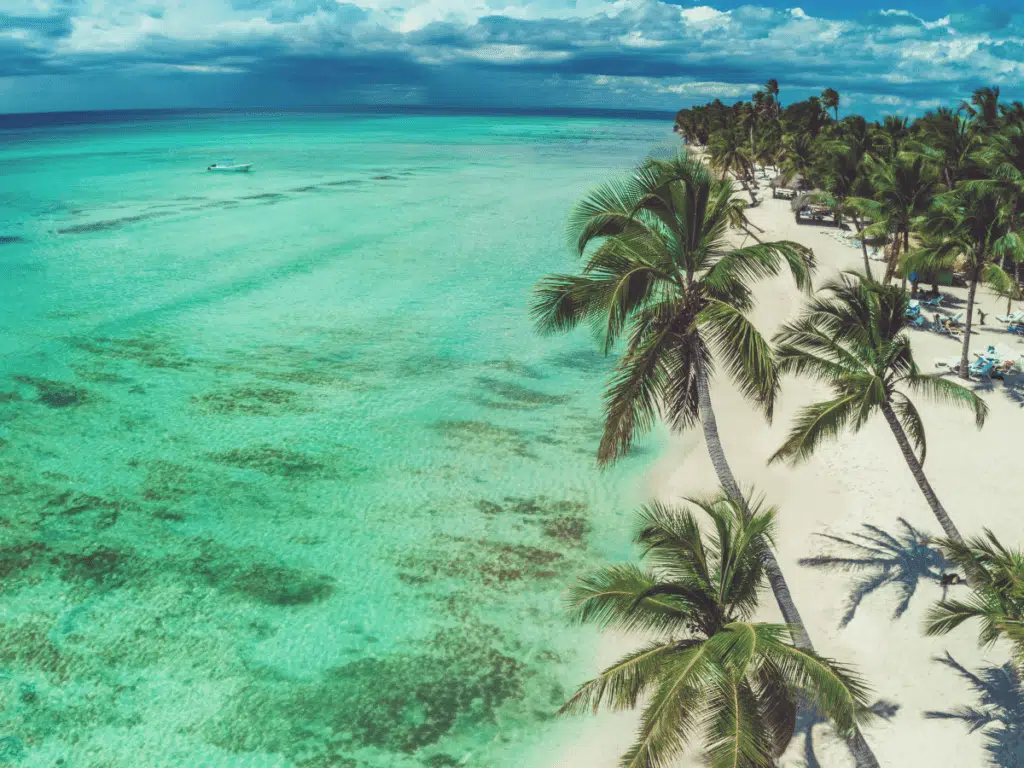
This post contains affiliate links that may reward me monetarily or otherwise when you use them to make qualifying purchases – at no cost to you. As an Amazon Associate, I earn from qualifying purchases. For more information, please read our disclosure policy.
Dominican Republic Digital Nomad Guide
The Dominican Republic is one of the best countries in the Caribbean for digital nomads. It offers the perfect mix of nature, infrastructure, affordable prices, and welcoming people. If you’re looking for an affordable destination for remote work with excellent flight connectivity and year-round warm temps, the Dominican Republic should be at the top of your list.
The Dominican Republic is mainly known for its all-inclusive resorts in Punta Cana, but there is so much more to explore, especially when you are diving deeper into the country and leaving the high-tourist areas. Areas like the Samaná peninsula or the North Coast offer the perfect combination of tourist infrastructure and off-the-beaten-path adventures for your days off and can be a perfect addition to any Dominican Republic itinerary.
No matter where you choose to base yourself as a digital nomad, you’ll always be close to the best things to do in the Dominican Republic, the international airport, the stunning beaches that the island is known for, and all the cultural and historic gems in the capital city of Santo Domingo.

Visas to the Dominican Republic
Travelers from most destinations will find that the Dominican Republic is generally an easy country to visit. Most travelers from the Americas and Europe can enter visa-free. A mandatory 10 USD tourist card is included in your international flight ticket.
All tourist visiting the island can remain for 30 days visa-free and can extend their stay up to 120 days. The extension can be done online by submitting some additional documents, such as a bank statement to prove sufficient funds, a medical certificate from a local doctor, a copy of your passport and your return flight ticket.
The fee for a stay from 31 up to 90 days is currently 2,500 pesos (approx. 45 USD) and for up to 120 days is 4,000 pesos (approx. 70 USD).
Most visitors looking to stay in the Dominican Republic avoid the residency process by taking a quick getaway to Puerto Rico, Colombia, or any other nearby country and getting a new tourist visa upon return. There are no restrictions on how many tourist visas you can get per year.
Plan a Trip to the Dominican Republic
Digital Nomad Visa to the Dominican Republic
There is currently no specific Dominican Republic remote work visa nor news of any specific Dominican Republic digital nomad visa in the works. Given that several other Caribbean nations have begun introducing digital nomad visas in recent years, the Dominican Republic may soon follow suit.
You may read online about the “Work in Nature” digital nomad visa regarding a Dominican Republic remote work visa. However, this is a bit of fake news – the “Work in Nature” visa is actually a new digital nomad visa for the country of Dominica, a smaller island nation in the eastern Caribbean. It has no relation to the Dominican Republic!

Safety in the Dominican Republic
The Dominican Republic is considered quite a safe place for digital nomads. Generally, digital nomads will agree that larger cities like Santo Domingo tend to feel a bit more unsafe than smaller towns and beach resort towns. However, the Dominican Republic is even considered one of the best islands for solo female travel.
While travelers should practice some important basic travel safety habits in the Dominican Republic – as everyone should no matter where they travel! – most travelers generally find the Dominican Republic to be quite safe.
Weather in the Dominican Republic
The weather in the Dominican Republic is perfectly predictable – you are traveling to the Caribbean, where the sun is always shining. Indeed, the Dominican Republic is a year-round warm destination, as it is always hot (between 75°F and 90°F) and almost always sunny.
The island experiences a distinct rainy season from May to November. Thankfully, the rainy season in the Dominican Republic is marked by little more than passing showers; there are hardly any days without even a little sunshine.
It’s important to keep in mind that the Dominican Republic sits in the Atlantic hurricane belt and can experience tropical storms and hurricanes during the season, which lasts from June through November. The height of the Atlantic hurricane season falls in September and October.
Best Hotels & Hostels in Santo Domingo
- Island Life Hostel ($)
- El Beaterio ($$)
- Hodelpa Nicolas de Ovando ($$$)
Cost of Living in the Dominican Republic
Especially by European or North American standards, the cost of living in the Dominican Republic is considered to be quite affordable. This makes the Dominican Republic an accessible location for digital nomads with all different types of careers and income levels. As a digital nomad, you’ll find everyone from tech executives to those teaching English online in DR.
Cost of Living in the Dominican Republic: $1,000 – 3,000+
A Dominican Republic digital nomad can live pretty well with 1,000 USD per month, though for those looking for more luxury and amenities, the sky is the limit. The following are some of the important monthly budget items to keep in mind for those looking to set up shop as a digital nomad in the Dominican Republic:
- Housing: $500 – 3,000+
- Transportation: $35 – 300+
- Food and Drinks: $150 – 500+
- Utilities: $50 – 300+
Keep reading for more details about some of these most important budget line items for digital nomads in the Dominican Republic.
Housing in the Dominican Republic
The cost of housing in the Dominican Republic will depend not just on the location but also on whether you opt for short-term or long-term rentals that last for at least a few months.
A long-term one-bedroom apartment in Santo Domingo could cost about 500 USD per month. If you’re looking for something beachfront, such as an apartment on the north coast, you could expect to pay 100 USD per night or 1000 USD per month and up.
Short-term accommodation prices are more variable. Here are some examples of nightly rates:
- One night in a hostel: 15 USD per person
- One night in a single or double room in a decent apartment, well-rated guesthouse, or family-owned hotel (not beachfront): 50 USD per room
- One night in an all-inclusive resort in Punta Cana: 150 USD or more in a double room
Make sure to check out the money-saving tips for digital nomads in the Dominican Republic below – you’ll find more about the best ways to secure housing depending on how long you plan to stay.
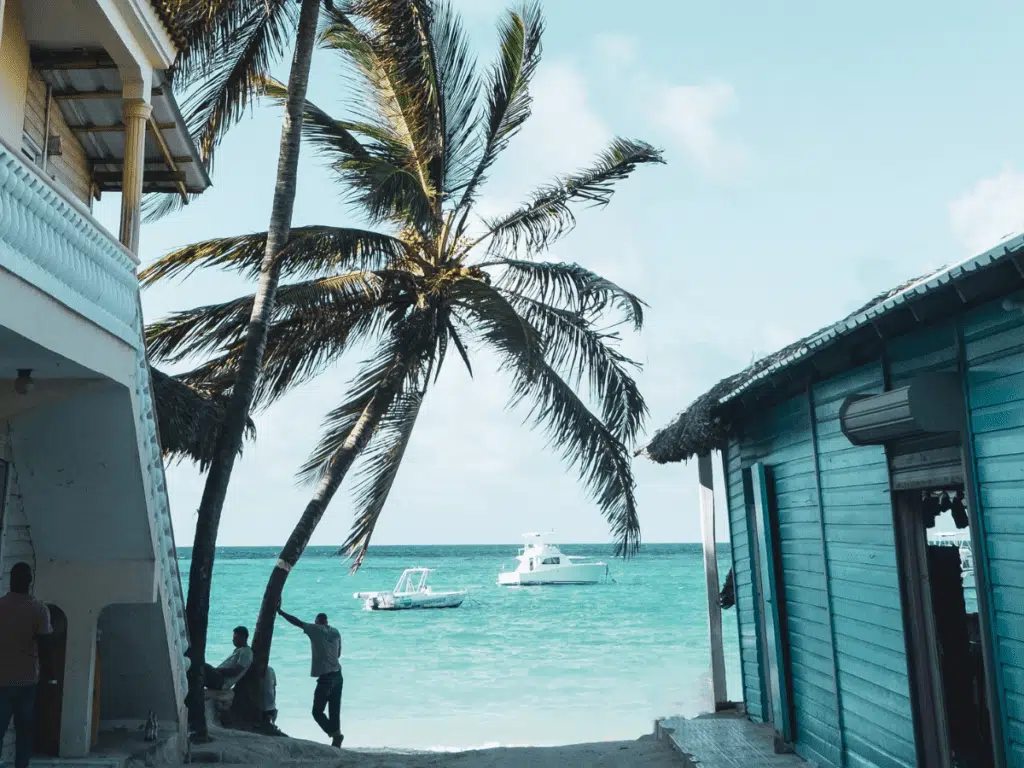
Transportation In the Dominican Republic
The cost of transportation for digital nomads in the Dominican Republic will depend on your lifestyle and your level of comfort navigating public transportation. If you are mainly using public transport, you can live in the country incredibly cheaply.
For example, a ride on public transport (metro, shared taxi, or bus) in Santo Domingo costs just 0.40 USD per ride! Taxis outside of the tourist areas aren’t that expensive either, especially as you can find Uber in Santo Domingo, Santiago, and Punta Cana.
Renting a car has become pretty expensive in the Dominican Republic, but it is still doable if you are a digital nomad with a bit of a higher budget.
Long-distance bus travel between cities tends to be quite affordable. For example, from Santo Domingo to Puerto Plata by bus costs just around 8 USD. Being such a small country, distance is never too far or bus rides too long.
Read More: 25+ Best Things To Do in the Dominican Republic
Travel Essential
Don’t head out on your adventure without comprehensive travel insurance! Good travel insurance may cover lost or stolen gear, medical emergencies, delayed or canceled flights, and more. Check out the policies available from SafetyWing or compare plans using Visitors Coverage.
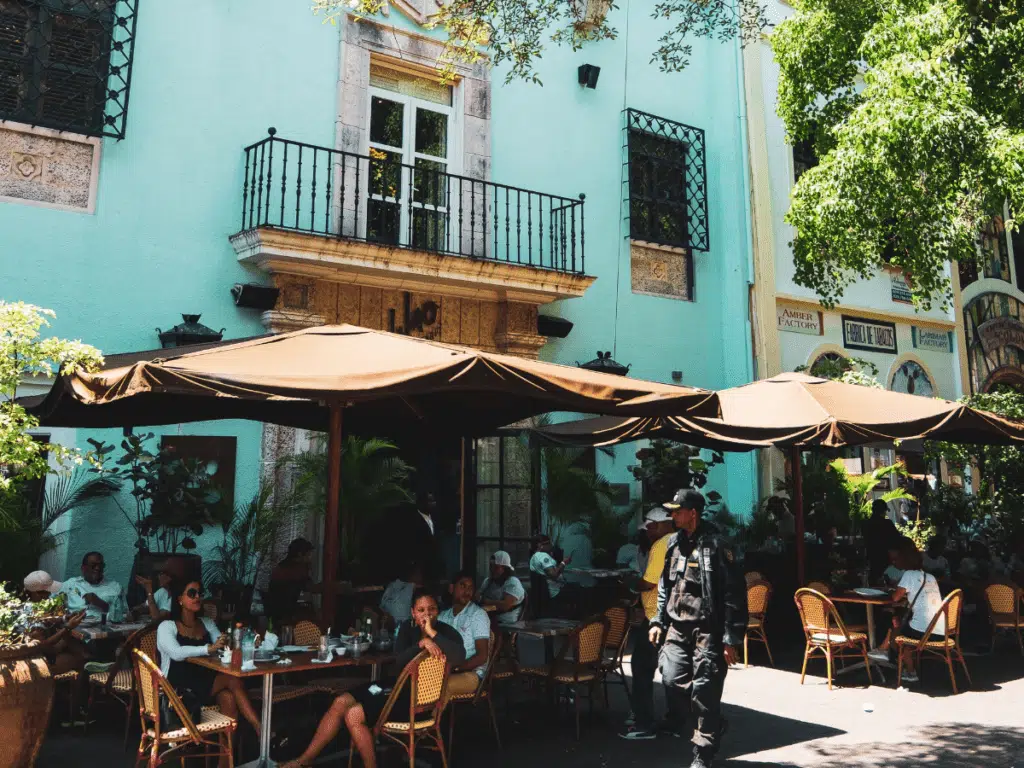
Food and Drinks in the Dominican Republic
The prices of food and drinks in the Dominican Republic can be explained pretty simply: everything that is produced locally is pretty cheap, and imported goods are quite expensive.
This means local or generic items are your best bet if you’re on a budget – stay away from recognizable brands that need to be imported!
There aren’t many large outdoor markets in the Dominican Republic, but there are large international-style supermarkets in basically every city, such as Las Terrenas, Sosua, Puerto Plata, Punta Cana, and La Romana.
Here are some examples of prices for groceries:
· Local pasta: 30 DOP (approx. 0.50 USD)
· Imported brand pasta: 90 DOP (approx. 1.60 USD)
· Local rice: 35 DOP (approx. 0.50 USD)
· Imported brand rice: 100 DOP (approx. 1.80 USD)
· Local beer (small bottle): 75 DOP (approx. 1.30 USD)
· Local high-quality rum (700ml): 1000 DOP (approx. 18 USD)
The prices you will pay in bars and restaurants can be extremely variable depending on the location. When living in the Dominican Republic as a digital nomad, you can eat pretty cheaply in local places and food stalls if you’re on a budget.
A typical Dominican breakfast at a local establishment could cost 2-4 USD per plate, or lunch from $3 – 4 per plate. Dinner at more stylish international restaurants can cost around $10 – 15 or more per plate.
Similarly, a mixed drink or beer at a local bar will cost $2 – 3, whereas the same mixed drink or beer at a nice beachfront bar will cost around $4 – 6.
Travel Essential
Don’t think about traveling without a good VPN (Virtual Private Network). Using a VPN while connecting to the internet is an easy way to keep your personal information safe from hackers and trackers. We’ve used NordVPN for years and couldn’t recommend it more – it’s a must for safety online, at home or abroad.
Utilities in the Dominican Republic
Depending on where you end up staying in the Dominican Republic as a digital nomad, you might have to pay some utilities such as gas, electricity, or internet. In the Dominican Republic, gas is pretty cheap, and electricity mainly depends on your use of air-conditioning; the most important utility will be the internet.
Depending on your usage requirements, it may be best to skip installing landline internet (it can take ages until it is installed) and exclusively use mobile internet if the internet is not provided in your apartment or rental house. You can buy so-called “Paqueticos” which are currently at approx. 2.50 USD for 10 GB (valid for five days) with local providers.
Most pre-booked apartments or other accommodations will already have internet installed, so mobile internet is more of a backup option.
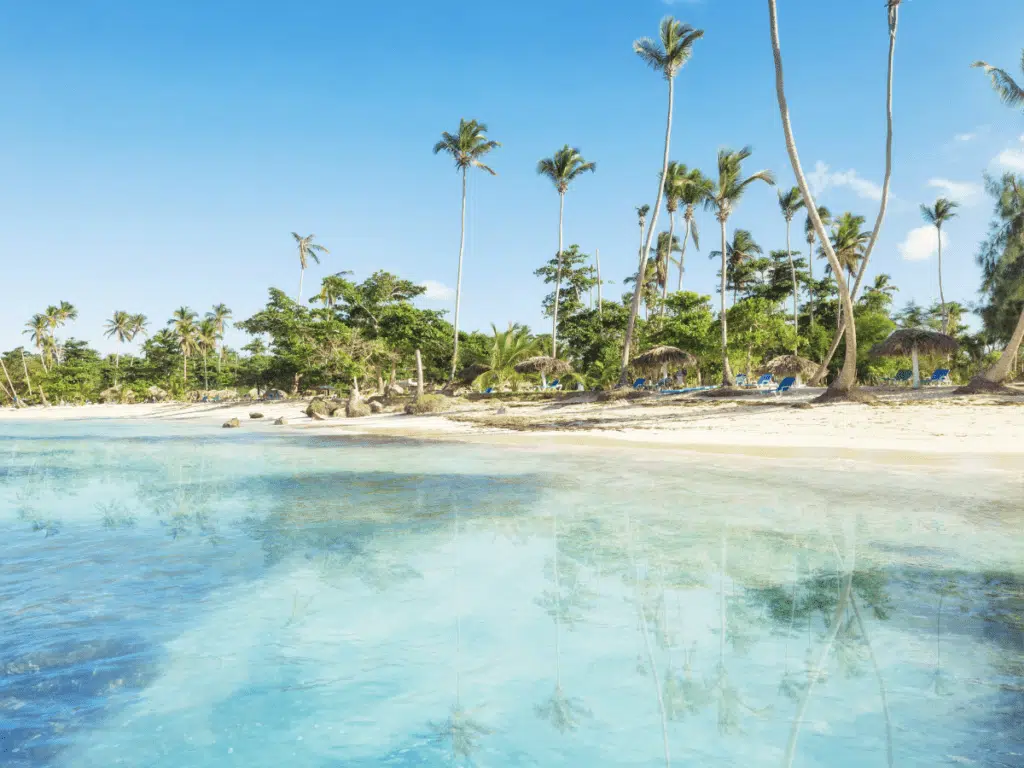
Digital Nomad Destinations in the Dominican Republic
There are four areas of the Dominican Republic that tend to be the most popular with digital nomads: Punta Cana, Santo Domingo, Cabarete, and Las Terrenas in the beachy province of Samaná. However, you’ll find expats and remote workers in practically every major town and city in the Dominican Republic.
Keep reading for more detailed information about each of these digital nomad Dominican Republic destinations.
Punta Cana for Digital Nomads
Punta Cana might be many visitors’ first city of choice for digital nomad Dominican Republic life due to the excellent flight connections from all over the world.
However, Punta Cana isn’t necessarily the best digital nomad hub in the Dominican Republic. For those looking for more authentic experiences in the Dominican Republic, Punta Cana tends to be too touristy, too expensive, and it is more difficult to get to know like-minded people.
However, Punta Cana has the best infrastructure in the Dominican Republic, is super safe and perfect if you are just coming for a few days to the country. If you are traveling with a higher budget, you can rent an Airbnb close to Punta Canas’ most beautiful beaches – ideally in the Corrales area – and enjoy an easy-going “workation.”
As there are no proper coworking spaces in Punta Cana nor a lot of coffee shops catering to digital nomads, Punta Cana is better for those used to working from your accommodation, be it a resort, guesthouse, or Airbnb.
Santo Domingo for Digital Nomads
Santo Domingo is the best digital nomad hub in the Dominican Republic if you love bustling city life and would like to immerse yourself in the local culture as much as possible.
Santo Domingo is not only a melting pot of all the different societies and ethnic backgrounds living in, but also home to many entrepreneurs and tech-affine Dominicans. This is a great place to come for networking with other digital nomads, world travelers, and local entrepreneurs.
If you choose to stay in Santo Domingo, your best bet is to base yourself in the historic Colonial Zone. There are plenty of different accommodations ranging anywhere from 10 to 1000 USD, and the Mochila co-working space is perfect to get some work done – and meet other digital nomads.
Furthermore, you can find coffee shops, additional co-working spaces, art galleries, supermarkets, plenty of accommodation, local life, street food, bars, restaurants, and nightlife, and all the best things to do in Santo Domingo – everything within walking distance!
Read More: 10 Best Places to Stay in Santo Domingo
Travel Essential
Don’t think about traveling without a good VPN (Virtual Private Network). Using a VPN while connecting to the internet is an easy way to keep your personal information safe from hackers and trackers. We’ve used NordVPN for years and couldn’t recommend it more – it’s a must for safety online, at home or abroad.
Cabarete for Digital Nomads
If you are not a city buff but prefer the beach, Cabarete is the first choice for digital nomads in the Dominican Republic. It offers the perfect mix of a beach vibe, plenty of international short- and long-term visitors, and isn’t over-touristed.
Plus, Cabarete has all the necessary infrastructure in terms of bars, restaurants, plenty of very reasonably priced accommodations, decent internet, and public working spaces such as coffee shops and co-working spaces. It’s an ideal digital nomad town – arguably the most popular in the country.
Your best bet to meet like-minded people is to make use of coworking spaces such as the Surfasana Lab or – even though it’s not an official co-working space – the Cabarete Coffee Company.
The several yoga studios (for even an absolute beginner in yoga to enjoy!) and the strip of bars and restaurants right at the beach in the center of Cabarete are the perfect places to hang out after a day of work – the beachfront location, low prices, and relaxed vibe are unbeatable.

Las Terrenas for Digital Nomads
If you want to have it a little bit quieter but still want to enjoy the beach and stunning nature, Las Terrenas is a good alternative option.
Las Terrenas is located on the Samaná peninsula, which is famous for its pristine beaches, stunning waterfalls, and endless coconut groves.
While it doesn’t have a lot of official co-working spaces (right now, Comun Co-Work is the only one), plenty of relaxed restaurants, beachfront coffee shops, or even bars are inviting to work if you don’t need a super quiet surrounding. Thanks to the large expat community and the open-minded locals, it is easy to connect to the people living in Las Terrenas, making it great for digital nomads.
Digital nomads should base themselves close to the town center and the main beaches, Playa Poppy or Playa Las Ballenas, as this is where most things are happening. Here you’ll find all the infrastructure and amenities you need for a remote work stay in the Dominican Republic.
Read More: Samaná, Dominican Republic: Ultimate Traveler’s Guide
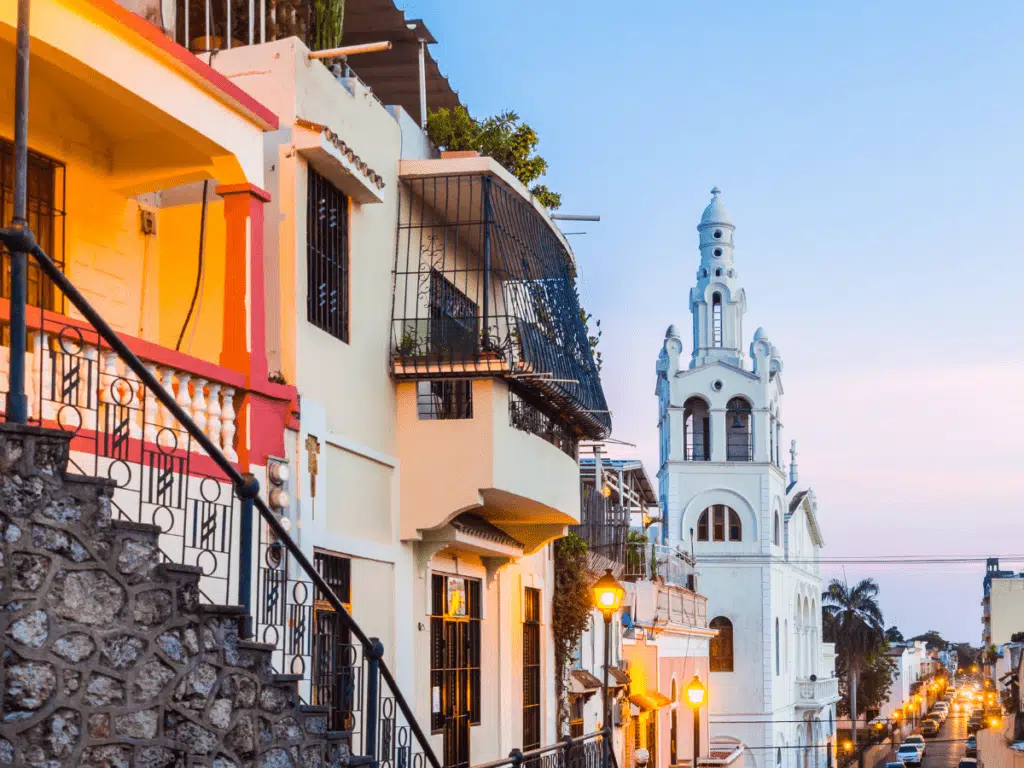
Money-Saving Tips for the Dominican Republic
Ask Before You Buy
A lot of places in the Dominican Republic don’t have menus or price lists. Ask for the price before you buy something – it doesn’t matter if it’s in a bar, with a local fruit vendor, or at the beach. Prices can vary widely from place to place, so this is important!
Go Local
If you have the choice between a local bar and an international bar, choose the local bar. Not only might you have more authentic experiences, but you also will pay considerably less. Of course, this money-saving tip applies when you are going for a drink, a meal, or anything in between.
Get Your Accommodation Beforehand
While it may not be the case when traveling in other countries, you hardly save any money in the Dominican Republic if you try to get your accommodation on the spot. Book your accommodations before your trip if you can, and save money and time.
Get Your Apartment On the Spot
An exception to the rule above is when you want to move for a very long time to the Dominican Republic! If you are looking for an apartment for 3 months or more, you will get considerably cheaper prices when you search on the spot or through local Facebook groups.
Ask For Happy Hours
If you love to have an after-work drink, always ask if the place you have chosen has a happy hour. They aren’t always displayed prominently, and as a lot of bars have a 2×1 special during certain hours, you can save considerably.
What to Pack for the Dominican Republic
If you are visiting or moving to the Dominican Republic, there isn’t anything special that you have to bring.
Thanks to the hot weather year-round, you won’t even need a sweater as long as you don’t visit the mountainous areas. Maybe bring one if you’re planning to take a lot of long-distance buses – their air-conditioning usually is on full blast!
If you need any specific medicine or tech gadgets like computers or camera equipment, you’re better off bringing them from your home country.
Specific items in these categories can be hard to find sometimes in the Dominican Republic. Dominicans order tons of stuff at Amazon for this reason – typical supermarkets and malls just have limited supply, particularly if you are looking for anything super special.

